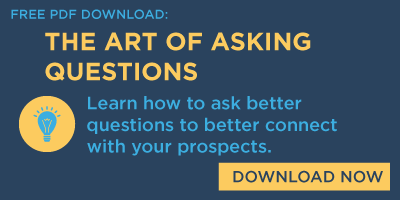 There is a pattern I have seen repeated over the nearly 20 years I have been involved in trying to help sales organizations improve their performance. A new product or service is launched, lots of product training is created to support the launch, and sales people are given incentives to sell the new offering. In most cases, sales start to happen, but after several months, overall sales are not reaching the lofty goals that have been set. This is often where I get involved and what I typically see is that a lot of sales have been made (often as many as the organization had projected), but the average sale is much smaller than they had hoped.
There is a pattern I have seen repeated over the nearly 20 years I have been involved in trying to help sales organizations improve their performance. A new product or service is launched, lots of product training is created to support the launch, and sales people are given incentives to sell the new offering. In most cases, sales start to happen, but after several months, overall sales are not reaching the lofty goals that have been set. This is often where I get involved and what I typically see is that a lot of sales have been made (often as many as the organization had projected), but the average sale is much smaller than they had hoped.
At this point, I look at the proposals behind the sales that were made. In nearly 100% of these proposals, the seller has done a good job of pitching the new product or service (good enough that they made the sale). But rarely is the proposal tailored to a need. Even great needs-based sellers tend to forget about this proven approach when they’re asked to sell the hot, shiny, new product.
The key to selling bigger deals (when you have a new product to offer and when you don’t) is to tailor the solution to a specific need. This always produces better results.
Most sales managers place the emphasis on the pipeline when a new product or service is launched. They ask each seller to show them their prospect list for the new offering and then they regularly track progress and celebrate the sales as they happen—often creating a culture where the faster you close the deal, the better. Really fast is good, but most would agree that pretty fast and really big is better!
Here’s an idea to help sell bigger deals. Ask each salesperson to come to a sales meeting with a needs analysis record filled out for a current prospect they are dealing with. Then divide the sellers into small groups of 4-5 people. Have each salesperson give a two- to three-minute summary of what they know about the prospect’s needs at this point, then have all of them pass around a copy of this summary of the needs, and let each salesperson write down one or two questions they would ask to learn more about the specific needs of this prospect. At the end of this exercise, each salesperson will have a list of questions they can ask to get to a deeper understanding of the prospect’s needs. Then they can create a tailored solution, using the new product or service as a part of the solution. Make sure they put a bigger price tag on this tailored solution because it will be worth more.



